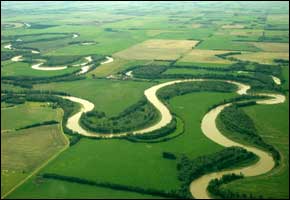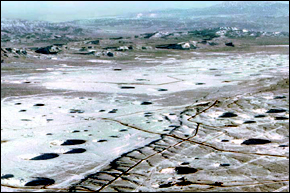World’s Rivers Are in Crisis, Global Report Says
International study finds serious threats to the world’s freshwater.
Eighty percent of the world’s population is at risk of water scarcity, as human activity across both developed and developing countries threatens the world’s freshwater systems and their biodiversity, a team of international scientists said in a study.
The report, published in the Sept. 30 issue of the journal Nature, is the first to assess threats to both human water security and freshwater biodiversity in river systems around the globe. It shows that nearly 80 percent of the planet’s population — 4.8 billion people in 2000 — lives in areas where either the water supply is vulnerable, or aquatic life is under threat.
The international research team behind the report examined the effects on water security and biodiversity of 23 different human influences – ranging from hydro schemes to pollution. According to the Guardian, previous studies have usually looked at just one influence at a time.
The study says that engineering projects, such as dams and reservoirs, can be effective at protecting water supplies for people but often cause harmful effects to the environment and do not solve the underlying causes of water scarcity.
It also suggests that the use of more natural options like safeguarding watersheds and floodplains can protect water supplies while preserving biological diversity.
“If you analyze water-security issues from both a human and biodiversity perspective, you find that the threats are shared and pandemic,” University of New York civil engineer Charles Vörösmarty told Nature. Vörösmarty, an expert on global water resources, was a lead investigator on the study.
“Even rich countries, which you would expect to be good stewards of water, have some of the most stressed and threatened areas,” he added.
Both human water security and biodiversity are at high risk in developed countries in North America and Europe, particularly in regions with heavy agriculture and high population densities. Local problems are often carried downstream, with more than 30 of the world’s 47 largest rivers recording moderate threat levels or worse at the river mouth.
“Reliance of wealthy nations on costly technological remedies to overcome their water problems and deliver water services does little to abate the underlying threats, producing a false sense of security in industrialized nations and perilous water insecurity in the developing world,” the study says. “In addition, lack of comparable investments to conserve biodiversity, regardless of national wealth, help to explain accelerating declines in freshwater species.”
Even in different parts of the world, rivers face similar threats from stressors like agricultural and industrial development, which often have indirect effects. According to U.S. News & World Report, for example, mercury pollution — which results from electricity generation at coal-fired power plants – tends to pollute surface water via the atmosphere.
“We find a real stew of chemicals flowing through our waterways,” Vörösmarty told the news magazine.
He added that the study did not account for threats from factors such as mining operations and increasing numbers of pharmaceuticals that make their way into surface water.
Sources: BBC, Nature, U.S. News & World Report, the Guardian









Leave a Reply
Want to join the discussion?Feel free to contribute!